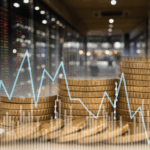Rare earth metals are increasingly becoming a key asset for investors, finding their way into various tech gadgets and everyday resources. As a result, these materials have become appealing for those seeking investments that might resist inflationary pressures. Echoing this interest, exchange-traded funds (ETFs) based around these metals present an accessible avenue for stakeholders to capture market value. Various ETFs cater to this sector, allowing investors to diversify portfolios without the need to physically handle these sought-after materials. This growing demand aligns with broader conversations surrounding Earth’s limited resources and the crucial role these metals play across several industries.
Investments in rare earth metals are experiencing increased attention, particularly as industries related to technology continue to expand. Historically, rare earth metals were less of an investment focus, but recent trends highlight their significance due to applications in advanced technologies. Past analyses have often flagged the volatility related to mining operations; however, the recent increase in ETFs indicates a shifting perspective where the underlying value of these metals is drawing sustained investment interest. Current strategies are more about balancing risks while capitalizing on global supply dependencies and the strategic uses of these metals.
What Makes VanEck ETF a Top Pick?
The VanEck Rare Earth and Strategic Metals ETF, known by its ticker REMX, is designed to give exposure to elements vital for technology products. This ETF has allocated around 60% of its assets to its top positions, with a significant portion invested in companies located in China, Australia, and the United States. An opportunity for annual returns is evident, given its recent performance history. However, investors must acknowledge inherent risks, as the financial outcomes of mining entities can be unpredictable, contrasting with the intrinsic, albeit volatile, value of the metals themselves.
Will SPDR’s US-focused Strategy Benefit Investors?
Yes, the SPDR S&P Metals & Mining ETF provides an opportunity to focus investments within the United States, having shown a robust upward trajectory in recent years. Its lower expense ratio enhances its appeal by securing more net gains for investors. While it concentrates less than 5.5% of its capital into any single stock, the varied stock performance within the fund offers diversification. This ETF reflects an investment composition poised to capitalize on domestic mining growth, complementing the broader sector’s upward trend.
The Global X Uranium ETF diversifies its mining exposure through uranium, a metal critical for nuclear energy. With rapid increases in share value, boosted by nuclear energy’s predicted growth within AI advancements, uranium sets itself apart as a focal point for forward-thinking investors. Leading holdings within this ETF report impressive performance, presenting uranium as a pillar within the broader rare-earth and strategic metals domain.
Considering the ETFs collectively, they demonstrate strategic footholds in vital segments of the economy, with each presenting unique attributes aligned with individual investor priorities. The ETFs mentioned above, REMX, XME, and URA, provide varying risk and return profiles catering to differing investment strategies.
From a broader perspective, rare earth metal ETFs are steadily evolving, fitting into the socioeconomic narrative of responsible investing and resource management. Investors should be well-informed about the dynamic nature of these investments, understanding that global supply chain fluctuations could influence valuations. This realm is rapidly becoming a staple conversation in financial forums, highlighting the financial community’s acknowledgment of rare metals’ strategic importance.










